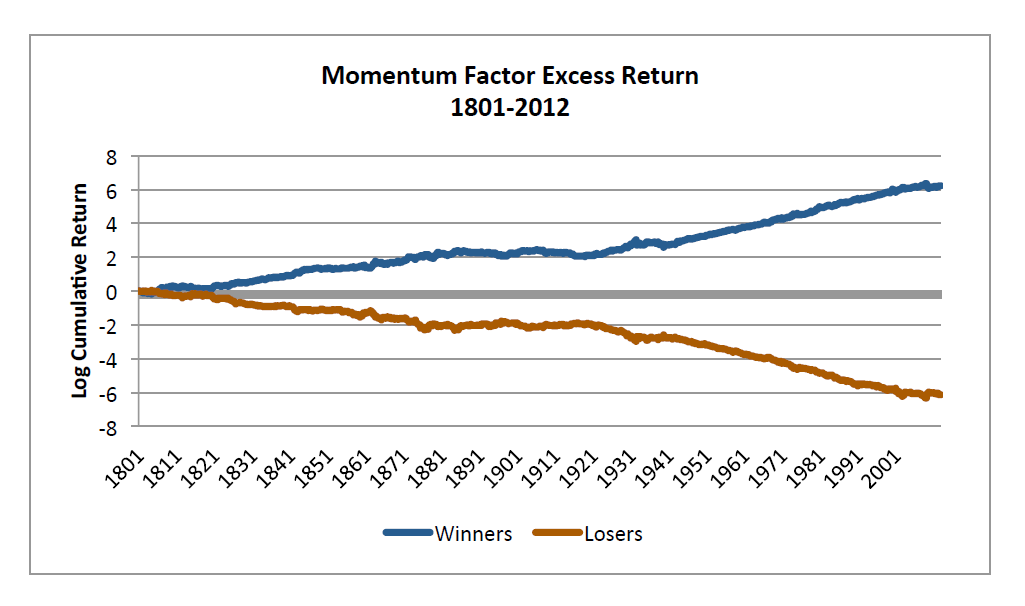212 Years of Price Momentum (The World’s Longest Backtest: 1801-2012)
- Geczy and Samonov
- A version of the paper can be found here.
- Want a summary of academic papers with alpha? Check out our free Academic Alpha Database!
Abstract:
We assemble a dataset of U.S. security prices between 1801 and 1926, and create an out-of-sample test of the price momentum strategy, discovered in the post-1927 data. The pre-1927 momentum profits remain positive and statistically significant. Additional time series data strengthens the evidence that momentum is dynamically exposed to market beta, conditional on the sign and duration of the tailing market state. In the beginning of each market state, momentum’s beta is opposite from the new market direction, generating a negative contribution to momentum profits around market turning points. A dynamically hedged momentum strategy significantly outperforms the un-hedged strategy.
Data Sources:
GFD, CRSP, ICF, ICPSR, 1801-2012
Alpha Highlight:
The momentum long/short has 3 negative decades out of 20. Not bad.

The results are hypothetical results and are NOT an indicator of future results and do NOT represent returns that any investor actually attained. Indexes are unmanaged, do not reflect management or trading fees, and one cannot invest directly in an index. Additional information regarding the construction of these results is available upon request.
Some serious chart porn:

The results are hypothetical results and are NOT an indicator of future results and do NOT represent returns that any investor actually attained. Indexes are unmanaged, do not reflect management or trading fees, and one cannot invest directly in an index. Additional information regarding the construction of these results is available upon request.
Strategy Summary:
- Buy winners!
Commentary:
- Be ready for a wild ride, but if you believe in empirical-based analysis…momentum is the most persistent trading factor around (alongside value)
hattip to Gary Antonacci who posted this last night
Who is out there trading momentum? Any luck?
About the Author: Wesley Gray, PhD
—
Important Disclosures
For informational and educational purposes only and should not be construed as specific investment, accounting, legal, or tax advice. Certain information is deemed to be reliable, but its accuracy and completeness cannot be guaranteed. Third party information may become outdated or otherwise superseded without notice. Neither the Securities and Exchange Commission (SEC) nor any other federal or state agency has approved, determined the accuracy, or confirmed the adequacy of this article.
The views and opinions expressed herein are those of the author and do not necessarily reflect the views of Alpha Architect, its affiliates or its employees. Our full disclosures are available here. Definitions of common statistics used in our analysis are available here (towards the bottom).
Join thousands of other readers and subscribe to our blog.
